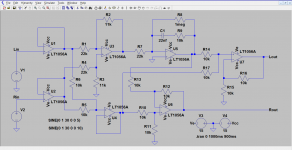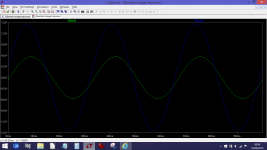Frank, you give them a listen on your non PC system and see what you think. You might find that what happens then outweighs the negatives you hear at the moment 🙂
Thanks man. She could really jam - we were all proud of her. Plus, she played at a huge local church with about a 4 second RT60 - what a sound! 😎
-- Jim
Sound great, I know its very impressive when you hear something like that live. Reproduced sound in the home can't come close to that experience.
(The organ on this recording is the one at Westminster Abbey. St Pauls has a 13 second reverb time, I don't know what the time for the Abbey is though)
Not with you here, pico! The laptop speakers don't "do" bass, so I'm not going to hear funnies here - but that doesn't stop me hearing what's happening in the rest of the spectrum. I don't have the obsession with bass that many do, and I have no desire to get onto that bandwagon, especially when I hear the poor quality of a great deal of it, out there, 😀.
Ok, Thx, I won't bother to download the files.
The purpose of the thread was ....?
I would dispute that, Karl! I've had organ sound, at times over the years, give the biiig experience, there's no magic in it. Just a combination of SPLs and clarity - many systems can't do both, and to project the intense, harmonic richness of an organ in full flight these requirements are an essential.Sound great, I know its very impressive when you hear something like that live. Reproduced sound in the home can't come close to that experience.
I would dispute that, Karl! I've had organ sound, at times over the years, give the biiig experience, there's no magic in it. Just a combination of SPLs and clarity -
Have to agree, mostly at least. It's still tough to beat the live experience for many reasons, the sound being only part of that equation as always. But organ music has a mass, a density that while sometimes particularly unforgiving, can also be uniquely rewarding at home. It's one my main go-tos to determine whether or not things are really dialed in, in the living room. Also, Nine Inch Nails. 😀
-- Jim (only half-joking)
The purpose of the thread was ....?
Just my curiosity to see what you all thought. When I first tried this I was using Celestion SL100's with a 6.5 bass unit. This unit added a bit (quite a bit 🙂) of wow factor. I was (and this is true) less swayed by what might be considered technically correct. If it worked for me and I liked it then it had merit and I would investigate.
Over the years the goal posts moved, those speakers are long gone... does this all sound familiar ? and now I'm happy without using this device. Back then it was a different story though. Sometimes I would switch it into circuit, sometimes not. Depended on the music and the mood.
Frank, you and me both, we will never come close to creating anything that even comes close to 'being there' when it comes to reproducing a large pipe organ in a domestic setting. For one thing the physical space of the listening room puts a stop to that. Yes you can get a satisfying experience, but its nothing like the real thing.
This was the preamp I built that incorporated this. The published circuit details (the magic bit 😉) will still be under copyright but I could do a simulation of it all.
Attachments
-
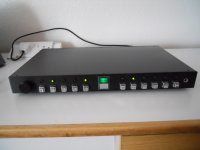 DSCN0358.JPG224.7 KB · Views: 112
DSCN0358.JPG224.7 KB · Views: 112 -
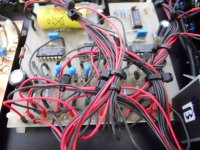 DSCN0371.JPG279.4 KB · Views: 79
DSCN0371.JPG279.4 KB · Views: 79 -
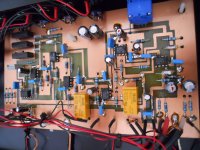 DSCN0370.JPG287.1 KB · Views: 74
DSCN0370.JPG287.1 KB · Views: 74 -
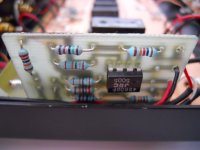 DSCN0368.JPG240 KB · Views: 70
DSCN0368.JPG240 KB · Views: 70 -
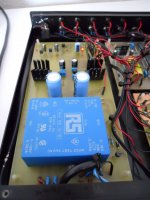 DSCN0367.JPG262.7 KB · Views: 73
DSCN0367.JPG262.7 KB · Views: 73 -
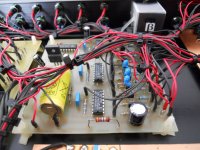 DSCN0366.JPG276.1 KB · Views: 115
DSCN0366.JPG276.1 KB · Views: 115 -
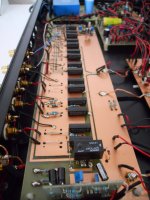 DSCN0365.JPG277.1 KB · Views: 115
DSCN0365.JPG277.1 KB · Views: 115 -
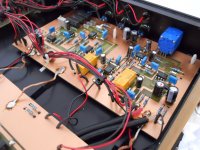 DSCN0364.JPG289.6 KB · Views: 120
DSCN0364.JPG289.6 KB · Views: 120 -
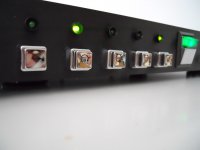 DSCN0361.JPG211.7 KB · Views: 115
DSCN0361.JPG211.7 KB · Views: 115
It will always come down to the individual, what they're looking for, 🙂 - the physical space will have impact on how the deep bass comes across, and if that's important, then, yes, it would be difficult. Personally, I look for the majesty and depth in the smaller pipes, how the complexity and space of that sound comes across - if that is reproduced well then the soundstage expands way beyond the confines of a domestic listening room, 😉.Frank, you and me both, we will never come close to creating anything that even comes close to 'being there' when it comes to reproducing a large pipe organ in a domestic setting. For one thing the physical space of the listening room puts a stop to that. Yes you can get a satisfying experience, but its nothing like the real thing. .
Pavel, interesting piece - your recording? - but I found that a stop(?) at about 2/3 through had a somewhat awkward tone to it, to me it didn't gell properly - is that just me, or is it something about the instrument, etc?
Pavel, interesting piece - your recording? - but I found that a stop(?) at about 2/3 through had a somewhat awkward tone to it, to me it didn't gell properly - is that just me, or is it something about the instrument, etc?
A colleague of mine has recorded that.
A stop - I do not know, I cannot hear a stop, maybe a mistake of an organ player? It is more like a hobby player than the true professional.
Karl, how about this organ sample. Do you think it needs any "enhancement"?
IMO initial quality of the recording is the key.
Its certainly very good indeed, lol, no enhancement needed on that one. Being very critical (perhaps more personal choice) and it comes across as a slightly 'dry' in its acoustic quality.
(I have various Decca recordings of Peter Hurford and the recording engineers seem to capture a unique kind of 'house sound' that I find really appealing. The Vierne recording in many ways lacks that and is somewhat dry but non the less very good)
A colleague of mine has recorded that.
A stop - I do not know, I cannot hear a stop, maybe a mistake of an organ player? It is more like a hobby player than the true professional.
I was going to ask if you had recorded it... I know how difficult it is to get a sound like that and your friend should be very proud, its excellent.
Perhaps the 'stop' Frank heard is the one that opens the drinks drawer 😉
I think the opamp was added only in the manipulated files (level 1-3). This way, what stand out is then the inferiority of the opamp
Is it true that the non-manipulated signal was not processed by the opamp(s) but some kind of "bypass"?
Because the problem is then people will not recognize what this circuit is delivering when they compare the processed file (which is processed by an opamp) versus unprocessed file (which didn't have to be processed by opamp).
See below examples:
the processing is killing the life in the track
Enhanced bass, loss of treble and loss of resolution
Of course, the extra (cheap) opamp processing, whatever it does, even just buffering, will kill the life of the music and especially kills resolution. This is obvious if we compare non-processed file with processed files.
But if we compare lightly processed versus highly processed, we can see an improvement in resolution and thus soundstage. This is an important point that may be missed.
The problem was with the fatiguing aspect which seems to be caused by the bass enhancement. That's why I asked if this technique can be done only with mid and treble. Because there is then possibility that this circuit technology will be beneficial for some purpose.
The fatiguing bass, I don't know what mechanism causing the fatigue. But the low resolution of the processed files is caused by the opamp circuit. Cheap power supply and cheap opamp. Noise is too high such that resolution is seriously affected.
Ah, an enhanced "stereo wide" button! I still have a clock radio that does a variation of this, although its "S" signal is shuffled in a more conventional manner - I've never heard it adjusted to work in the bass region the way Mooly's did.
I was way off with my guess - I was thinking this was a Barcus-Berry BBE effect with its bass "enhancing" adjustment. But of course the whole BBE thing was proprietary; maybe they were using some version of Blumlein too.
Thanks for the link, by the way - interesting reading. And thanks to Mooly for the brain-teaser, although I must admit I like the unaltered versions best. 🙂
-- Jim
P.S. So, why does the little toothache guy show up in the Smilies box, right after I get back from the dentist?? Creepy, man...
Hmmm, reading the pdf, it seems that this is the SPATIALIZER module I have ever used in 1991. In 1991 I have used "spatializer", "bass expander", "exciter", "dynamic expander", "dynamic noise reduction". I have drawn the circuits but never understood how they worked. Reading the pdf, it is obviously beyond my knowledge to understand from the circuit 😛 I wish I can read pdf for the other modules above...
Great link, thanks.
Mooly, can you elaborate any on the particular settings used for this test? For example, the nature of the EQ applied to the M and S signals?
That is one hell of a unique preamp, there. 😱
-- Jim
That is one hell of a unique preamp, there. 😱
-- Jim
Last edited:
Thanks Jim 🙂 I made that preamp to partner Doug Selfs blameless power amp that was all the rage back then. I built the image enhancer as a trial initially and liked it so much that I built a preamp centred around it. I used the combination for several years.
As mentioned at the start, this isn't my own circuit but is credited to Richard Brice.
This is a simulation of that circuit and with a phase difference of just 10 degrees between the L and R input signals at 30Hz. The only component that alters to get the different levels of correction is the capacitor in the integrator.
As mentioned at the start, this isn't my own circuit but is credited to Richard Brice.
This is a simulation of that circuit and with a phase difference of just 10 degrees between the L and R input signals at 30Hz. The only component that alters to get the different levels of correction is the capacitor in the integrator.
Attachments
- Status
- Not open for further replies.
- Home
- General Interest
- Everything Else
- Listening Test Of A Different Kind.

